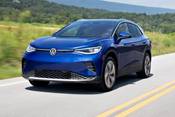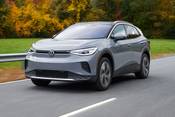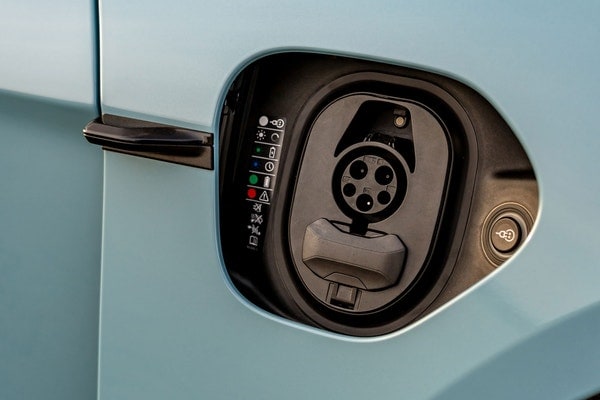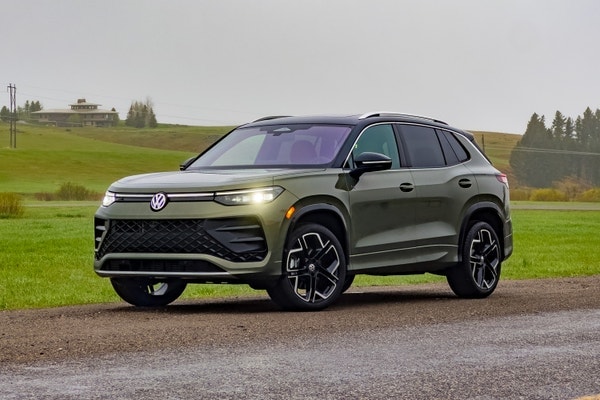When the 2021 ID.4 first goes on sale in the spring of 2021 — pushed back from the original launch date of winter 2020 — through a VW reservation program, it will initially come with a single electric motor mounted at the rear axle and driving the rear wheels. The motor produces 201 horsepower and 228 lb-ft of torque.
The ID.4 is quick off the line, but that initial rush of acceleration falls off quicker than in other EVs. In Edmunds' testing, the ID.4 accelerated to 60 mph in 7.7 seconds. For comparison, the Hyundai Kona Electric, while smaller and lighter than the ID.4, can accelerate from 0 to 60 mph in 6.6 seconds. Still, if you're used to acceleration from, say, a regular gas-powered Toyota RAV4, the ID.4's acceleration will seem sporty in comparison.
With a curb weight of 4,699 pounds, the ID.4 is heavy when compared to a typical gasoline-powered small SUV. Some of that weight is masked by the floor-mounted location of the heavy battery pack. Pretty much every new EV uses this design to help lower its center of gravity, which thereby helps make the car feel more hunkered down when you're going around turns. Even so, the ID.4 doesn't feel especially sporty compared to other electric SUVs such as the Ford Mustang Mach-E and Tesla Model Y.
Our test ID.4 stopped from 60 mph in 120 feet. That's an average distance for a small SUV, but the brakes take some time to get used to for routine around-town driving. The pedal effort is unsettlingly soft, and the mass of the ID.4 means you'll likely want to give yourself a bit more room than you may be used to.
Volkswagen will release an all-wheel-drive variant, with a second motor at the front axle, later in calendar year 2021. We think this will be the one to get since it increases total output to a more robust 302 hp.










